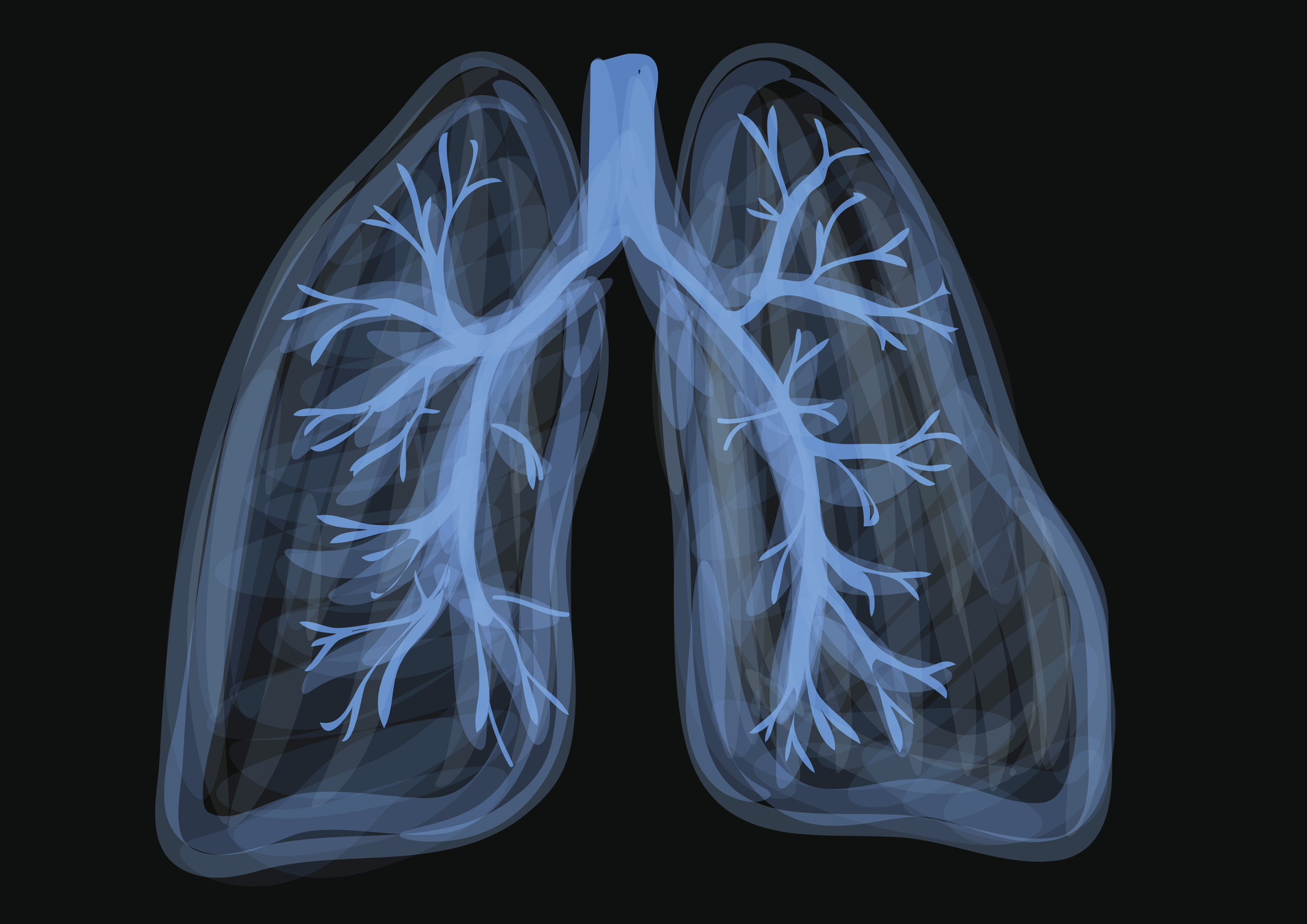Can vaping damage your lungs? What we do (and don't) know
Vaping is on the rise among teenagers, but reports link it to severe lung disease.

The rising popularity of vaping has been dramatic, especially among teenagers. According to a survey from the Centers for Disease Control and Prevention, 14.1% of high school students reported current e-cigarette use in 2022. This represents an increase since 2017, when 11.7% of high school students reported current e-cigarette use.
Another survey among high school seniors found that more than 40% had tried e-cigarettes. Certainly, age restrictions — it's illegal to sell e-cigarettes to anyone under 21 (18 or 19 in some states) — aren't preventing use among teens and young adults. And more than nine million adults 18 or older use e-cigarettes, according to a 2020 survey by the CDC.
What is vaping?
Vaping involves heating a liquid and inhaling the aerosol into the lungs. With vaping, a device such as an e-cigarette is used that heats up a liquid (called vape juice or e-liquid) until it turns into a vapor that is inhaled. These devices are commonly called vapes, mods, e-hookahs, sub-ohms, tank systems, and vape pens. They may all look a bit different, but work in similar ways.
These devices heat up various flavorings, nicotine, marijuana, or other potentially harmful substances. A CDC study found that 99% of the e-cigarettes sold in assessed venues in the United States contained nicotine.
Nicotine is addictive, of course. And while that fact is prominently displayed in advertising, we know from experience with regular cigarettes that warnings don't always work!
The e-cigarette aerosol that users breathe from the device and exhale can contain harmful and potentially harmful substances, including
- nicotine
- ultrafine particles that can be inhaled deep into the lungs
- flavorings such as diacetyl, a chemical linked to a serious lung disease
- volatile organic compounds
- cancer-causing chemicals
- heavy metals such as nickel, tin, and lead.
How vaping can affect your lungs
You may have seen news reports of sudden and severe lung problems, including deaths, linked to vaping. This condition is called e-cigarette, or vaping, product use-associated lung injury, or EVALI.
- More than 2,800 e-cigarette users required hospital admission due to EVALI through February 2020; 68 of these people died. Most cases were among teens and young adults.
- Typically, symptoms have started gradually, with shortness of breath and/or chest pain before more severe breathing difficulty led to hospital admission.
- Experts now suspect contamination with a form of vitamin E (called vitamin E acetate) in some tetrahydrocannabinol (THC)-containing e-cigarettes as the cause of EVALI. Other contaminants and other factors (such as pre-existing lung disease) may also play a role.
- The number of new EVALI cases has declined dramatically since September 2019, probably due to public health messaging about a link between THC in e-cigarettes and EVALI, and removal of vitamin E acetate from e-cigarettes. However, it's also true that some cases of EVALI may be missed (such as those attributed to infection) and tracking of cases is incomplete.
Popcorn lung and vaping. "Popcorn lung," or bronchiolitis obliterans (BO), refers to a type of inflammation in the lungs that causes wheezing, coughing, and shortness of breath. Over time, it can lead to scarring of the lungs' tiny air sacs, along with thickening and narrowing of the airways. A chemical called diacetyl, found in many e-cigarette flavors, is one cause of this condition. The name comes from reports of the illness due to diacetyl among workers in a microwave popcorn factory.
Other health risks of vaping
The tragic and alarming cases of severe lung disease are clearly cause for concern. A number of other health effects are also worrisome:
Nicotine from vaping. Nicotine is highly addictive and can affect the developing brain, potentially harming teens and young adults. Even some "nicotine-free" e-cigarettes have been found to contain nicotine. Accidental exposure to liquid from e-cigarettes has caused acute nicotine poisoning in children and adults.
Vaping and smoking. Teens who vape are more likely to begin smoking cigarettes. Many young people who use e-cigarettes also smoke cigarettes.
Cancer risk and vaping. Some substances found in e-cigarette vapor have been linked to an increased risk of cancer. The aerosol that users inhale and exhale from e-cigarettes can expose both themselves and bystanders to harmful substances.
Other risks of vaping. Explosions and burns have been reported with e-cigarettes while recharging the devices, due to defective batteries. In addition, vaping during pregnancy could harm a developing fetus.
How vaping affects our overall health is uncertain. However, there appears to be ample evidence that vaping is not "95% less harmful than smoking" as some have claimed.
Who is at the highest risk from harms of vaping?
It's not entirely clear how often vaping might lead to lung trouble, or who is at highest risk. For example, are lung problems more common among vapers who already have breathing problems (such as asthma) or who smoke other substances, such as regular cigarettes or marijuana? Is it more common among younger individuals?
Can vaping help you stop smoking?
In addition to whatever enjoyment vaping brings, some evidence suggests vaping helps some people stop smoking (though other evidence suggests otherwise). How it compares to a nicotine patch or other methods of smoking cessation is not clear. So far, the FDA has not approved vaping as a method of smoking cessation. And many smokers who vape continue to use both cigarettes and e-cigarettes.
The true balance between the benefits and risks of vaping remains impossible to assess. We don't always know what's in e-cigarettes. The FDA, which is responsible for authorizing or approving tobacco products, authorized marketing of a few e-cigarette products in 2021 and has denied many others, but as noted by the agency, these actions "do not mean these products are safe or FDA approved." And, there is no information available about their long-term health impact.
The bottom line
Perhaps vaping should be viewed as a "lesser of evils" for current cigarette smokers. Still, it's clear that there is a lot about vaping we don't know. One way we'll learn more is by people reporting possible vaping-related health problems to the FDA — you can let them know if you've had such problems.
Until we know more, think twice about vaping. Federal and state authorities recommend avoiding all vaping until more is known. If you do decide to vape, avoid e-cigarettes bought "off the street" and stick with brand name e-cigarette products without modification (such as adding marijuana or other drugs).
These cases of severe lung disease among people who vape raise important questions about the safety of vaping. Perhaps we shouldn't be surprised that lung problems might develop in people who vape: our lungs were meant to inhale clean air and nothing else. It took many years to recognize the damage cigarettes can cause. We could be on a similar path with vaping.
Follow me on Twitter @RobShmerling
About the Author

Robert H. Shmerling, MD, Senior Faculty Editor, Harvard Health Publishing; Editorial Advisory Board Member, Harvard Health Publishing
Disclaimer:
As a service to our readers, Harvard Health Publishing provides access to our library of archived content. Please note the date of last review or update on all articles.
No content on this site, regardless of date, should ever be used as a substitute for direct medical advice from your doctor or other qualified clinician.
















